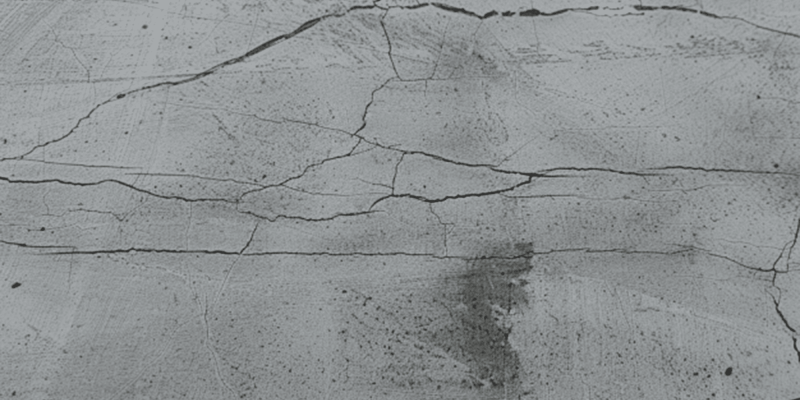Hey there, Springfield homeowners! Ever noticed those fine, web-like cracks on your concrete surfaces? That’s called concrete crazing. It might seem worrying, but it’s a common issue many homeowners face. This article is your go-to guide to understanding what crazing is, how to spot it, and what you can do about it. Let’s dive in and crack the mystery of crazing together!
What is Concrete Crazing?
Concrete crazing might sound like a complicated term, but it’s quite simple to understand. Imagine the surface of your concrete looking like a spider web or a dried lakebed. That pattern of fine, shallow cracks spreading across the surface is what experts call crazing.
Characteristics of Crazing Cracks: These cracks are very thin and barely visible from a distance. They don’t usually affect the strength of the concrete, but they can make your driveway, patio, or sidewalk look a bit worn out.
How Crazing Affects Concrete Surfaces: While crazing cracks are mostly a cosmetic issue, they can lead to questions about the quality of the concrete work. Over time, if left unchecked, they might also collect dirt, making the concrete harder to clean and maintain.
Causes of Concrete Crazing
Understanding why crazing happens can help you prevent it. Several factors can cause crazing, but here are the main ones:
Environmental Factors:
Temperature Variations: Springfield’s hot summers and cold winters can cause the concrete to expand and contract, leading to crazing.
Moisture Content: Too much or too little moisture during the curing process can also cause these web-like cracks.
Construction Practices:
Improper Curing Techniques: If the concrete surface dries too quickly, it might craze.
Mix Composition: The right mix of water, cement, and aggregate is crucial. An improper balance can make the surface more prone to crazing.
External Stressors:
Mechanical Pressure: Heavy loads or pressure on the concrete surface might lead to crazing.
Chemical Exposure: Chemicals like de-icers can also cause surface damage, leading to crazing.
Identifying Concrete Crazing
Spotting crazing is pretty straightforward. Look for the telltale signs:
Visual Indicators and Patterns: Those fine, web-like cracks that don’t seem to penetrate deep into the concrete are your first clue.
Common Areas of Occurrence: Crazing often shows up on driveways, walkways, patios, or any concrete surface exposed to the elements.
When to Seek Professional Evaluation: If you’re unsure whether what you’re seeing is crazing or something more serious, it’s always a good idea to call in a professional. They can tell you if it’s just a cosmetic issue or if it signals deeper problems.
Prevention and Maintenance
Preventing concrete crazing might seem challenging, but with the right knowledge and approach, you can significantly reduce the risk. Here’s how:
Preventative Measures:
Proper Construction and Curing Methods: Ensuring that concrete is correctly mixed, poured, and allowed to cure slowly is key. Covering the concrete with wet burlap or plastic sheeting can help maintain the right moisture level during the curing process.
Selection of Materials and Mix Design: Use a concrete mix that’s appropriate for Springfield’s climate. A mix that’s too rich in cement can lead to crazing, so balance is essential.
Maintenance Tips:
Regular Inspections and Cleaning: Keep an eye on your concrete surfaces and clean them regularly. Removing dirt and debris can prevent crazing from getting worse.
Sealing and Waterproofing Techniques: Applying a concrete sealer can protect the surface from moisture, chemicals, and temperature changes, all of which can contribute to crazing.
Professional Interventions:
When and Why to Hire Experts: If you notice significant crazing or if the surface starts to deteriorate, it’s time to call in the professionals. They can assess the damage and recommend the best course of action, whether it’s sealing, resurfacing, or replacing the affected areas.
Common Questions and Concerns
Homeowners often have questions about concrete crazing. Let’s address some of the most common concerns:
Is Concrete Crazing a Structural Concern
Mostly, crazing is a cosmetic issue and does not affect the structural integrity of the concrete. However, it can be a sign of improper installation or curing, which might warrant a closer look.
How Does Crazing Affect Property Value
While crazing itself is mostly cosmetic, extensive crazing can make your property look neglected, potentially affecting its value. Keeping your concrete in good condition is always a wise investment.
Can Crazed Concrete be Repaired or Must It be Replaced
Minor crazing can often be addressed with resurfacing techniques. However, if the crazing is extensive and the concrete is structurally compromised, replacement might be necessary.
DIY vs. Professional Repair Options
For minor crazing, DIY sealant applications can be an effective temporary solution. But for more severe cases or to ensure long-term durability, professional repair services are recommended.
Future-proofing Your Concrete Surface
To protect against future crazing, consider applying a high-quality sealer every few years and performing regular maintenance checks. Avoid using harsh chemicals for de-icing and clean spills promptly to prevent chemical-induced crazing.
Conclusion
Crazing in concrete might seem like a big deal, but with the right care and knowledge, it’s manageable. By understanding what causes crazing, how to identify it, and the steps you can take to prevent and maintain your concrete, you’ll ensure your Springfield home stays looking great. Remember, if in doubt, calling in a professional can provide peace of mind and save you from bigger issues down the road. Keep your concrete happy, and it will serve you well for years to come!

